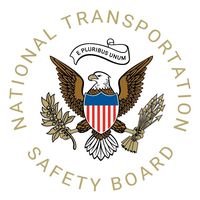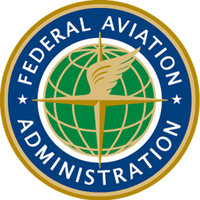Tragedy in the Skies: The Hudson River Helicopter Crash
April 11, 2025, 5:16 pm

Location: United States, District of Columbia, Washington
Employees: 201-500
Founded date: 1967

Location: United States, District of Columbia, Washington
Employees: 10001+
Founded date: 1958
On April 10, 2025, a sightseeing helicopter plunged into the Hudson River, claiming six lives, including a family of Spanish tourists. The incident unfolded like a scene from a nightmare, as video footage captured the helicopter spiraling down, parts breaking away like leaves in a storm. The Bell 206, a workhorse of the skies, was operated by New York Helicopters. The crash site, near a maintenance pier for the Holland Tunnel, became a grim tableau of rescue boats circling the submerged wreckage.
The helicopter's owner, Michael Roth, expressed devastation but offered little clarity on the cause. He noted the absence of the main rotor blades in the crash video, a detail that hinted at a catastrophic mechanical failure. In the world of aviation, such failures are rare but not unheard of. The National Transportation Safety Board (NTSB) quickly announced an investigation, seeking answers in the wreckage.
Aviation experts weighed in, suggesting that the helicopter may have suffered a mechanical failure that left the pilot powerless. Once the lift was lost, the descent was inevitable, akin to a stone dropped from a great height. The crash marked a tragic return to the headlines for New York, a city that has seen its share of aviation disasters. In 2009, a collision over the Hudson claimed nine lives, and in 2018, a charter helicopter crash into the East River resulted in five fatalities. Each incident leaves scars on the collective memory of the city.
The skies above Manhattan are a busy thoroughfare, filled with helicopters and planes. Business executives and tourists alike rely on these aerial taxis to navigate the urban sprawl. Yet, with each flight, there lurks a shadow of risk. The recent crash has reignited concerns about aviation safety in the U.S. The Federal Aviation Administration (FAA) and NTSB are tasked with ensuring that such tragedies do not become routine.
As the investigation unfolds, questions linger. What led to the mechanical failure? Was it a manufacturing defect, or was it a result of inadequate maintenance? These are not just technical inquiries; they are questions of life and death. The families of the victims deserve answers, and the public deserves assurance that flying remains safe.
The crash was the first fatal helicopter incident in New York since a 2019 accident that claimed the life of a pilot. The frequency of such tragedies raises alarms. In January 2025, a medical transport plane crashed in Philadelphia, killing seven. Just days earlier, a midair collision between an American Airlines jet and an Army helicopter marked one of the deadliest air disasters in recent memory. Each incident chips away at public confidence in air travel.
As rescue crews worked tirelessly at the crash site, the emotional toll was palpable. Families were left shattered, grappling with the sudden loss of loved ones. The victims were not just statistics; they were individuals with dreams and aspirations. The tragedy serves as a stark reminder of the fragility of life.
In the aftermath, discussions about aviation regulations and safety protocols will undoubtedly intensify. The FAA and NTSB must work diligently to uncover the truth. Transparency is crucial. The public deserves to know what went wrong and how similar incidents can be prevented in the future.
The helicopter industry, while generally safe, is not immune to scrutiny. The Bell 206 has a long history of service, but like any machine, it requires vigilant maintenance. Operators must adhere to strict safety protocols to ensure that their aircraft are fit for flight. The loss of six lives is a wake-up call for the industry.
As the investigation progresses, the focus will shift to accountability. Who is responsible for the maintenance of the helicopter? What checks and balances are in place to prevent such tragedies? These questions must be answered to restore faith in the system.
In the coming weeks, the NTSB will release preliminary findings. Families will await answers, hoping for closure. The community will rally around them, offering support in their time of grief. The crash may fade from the headlines, but its impact will linger.
The Hudson River, a witness to countless flights, now bears the weight of sorrow. It serves as a reminder of the risks taken in the pursuit of adventure. As the sun sets over the city, the sky remains a canvas of dreams and dangers. The hope is that lessons learned from this tragedy will lead to safer skies for all.
In the end, aviation is a dance between man and machine. When that dance falters, the consequences can be dire. The Hudson River helicopter crash is a tragic chapter in the ongoing story of flight. It calls for reflection, reform, and a renewed commitment to safety. The skies must remain a place of wonder, not a harbinger of grief.
The helicopter's owner, Michael Roth, expressed devastation but offered little clarity on the cause. He noted the absence of the main rotor blades in the crash video, a detail that hinted at a catastrophic mechanical failure. In the world of aviation, such failures are rare but not unheard of. The National Transportation Safety Board (NTSB) quickly announced an investigation, seeking answers in the wreckage.
Aviation experts weighed in, suggesting that the helicopter may have suffered a mechanical failure that left the pilot powerless. Once the lift was lost, the descent was inevitable, akin to a stone dropped from a great height. The crash marked a tragic return to the headlines for New York, a city that has seen its share of aviation disasters. In 2009, a collision over the Hudson claimed nine lives, and in 2018, a charter helicopter crash into the East River resulted in five fatalities. Each incident leaves scars on the collective memory of the city.
The skies above Manhattan are a busy thoroughfare, filled with helicopters and planes. Business executives and tourists alike rely on these aerial taxis to navigate the urban sprawl. Yet, with each flight, there lurks a shadow of risk. The recent crash has reignited concerns about aviation safety in the U.S. The Federal Aviation Administration (FAA) and NTSB are tasked with ensuring that such tragedies do not become routine.
As the investigation unfolds, questions linger. What led to the mechanical failure? Was it a manufacturing defect, or was it a result of inadequate maintenance? These are not just technical inquiries; they are questions of life and death. The families of the victims deserve answers, and the public deserves assurance that flying remains safe.
The crash was the first fatal helicopter incident in New York since a 2019 accident that claimed the life of a pilot. The frequency of such tragedies raises alarms. In January 2025, a medical transport plane crashed in Philadelphia, killing seven. Just days earlier, a midair collision between an American Airlines jet and an Army helicopter marked one of the deadliest air disasters in recent memory. Each incident chips away at public confidence in air travel.
As rescue crews worked tirelessly at the crash site, the emotional toll was palpable. Families were left shattered, grappling with the sudden loss of loved ones. The victims were not just statistics; they were individuals with dreams and aspirations. The tragedy serves as a stark reminder of the fragility of life.
In the aftermath, discussions about aviation regulations and safety protocols will undoubtedly intensify. The FAA and NTSB must work diligently to uncover the truth. Transparency is crucial. The public deserves to know what went wrong and how similar incidents can be prevented in the future.
The helicopter industry, while generally safe, is not immune to scrutiny. The Bell 206 has a long history of service, but like any machine, it requires vigilant maintenance. Operators must adhere to strict safety protocols to ensure that their aircraft are fit for flight. The loss of six lives is a wake-up call for the industry.
As the investigation progresses, the focus will shift to accountability. Who is responsible for the maintenance of the helicopter? What checks and balances are in place to prevent such tragedies? These questions must be answered to restore faith in the system.
In the coming weeks, the NTSB will release preliminary findings. Families will await answers, hoping for closure. The community will rally around them, offering support in their time of grief. The crash may fade from the headlines, but its impact will linger.
The Hudson River, a witness to countless flights, now bears the weight of sorrow. It serves as a reminder of the risks taken in the pursuit of adventure. As the sun sets over the city, the sky remains a canvas of dreams and dangers. The hope is that lessons learned from this tragedy will lead to safer skies for all.
In the end, aviation is a dance between man and machine. When that dance falters, the consequences can be dire. The Hudson River helicopter crash is a tragic chapter in the ongoing story of flight. It calls for reflection, reform, and a renewed commitment to safety. The skies must remain a place of wonder, not a harbinger of grief.